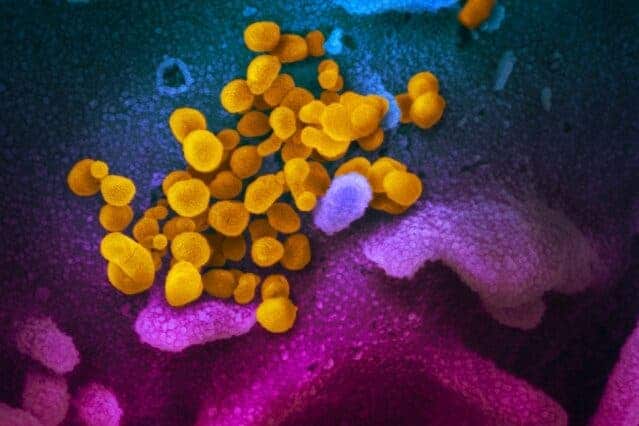
Researchers in Israel affiliated with the Ben-Gurion University of the Negev (BGU) have developed a nanoparticle coating that deactivates the coronavirus off surfaces.
The novel coating could be employed across surfaces in hospitals and healthcare facilities, as well as crowded indoor public spaces like airports, schools, and public transit.
Coronavirus repellant
Although there are many unknowns surrounding SARS-CoV-2, the virus responsible for COVID-19, the general consensus is that the coronavirus mainly spreads through direct contact from person to person.
A secondary mode of transmission is through contact with contaminated surfaces, such as a doorknob or bus rail that was sprayed with respiratory fluids containing the virus following a cough or sneeze.
In order to avoid infections, surfaces that are often touched by potential hosts for the virus must be disinfected. However, the procedure needs to be repeated perhaps multiple times a day for it to be of any use.
In contrast, the new coating developed in Israel needs to be only applied once and its anti-microbial properties persist for weeks or perhaps even months.
The coating is made up of nanoparticles of metal ions (copper and other metals) and polymers. The proof-of-concept was coated on various surfaces that came in contact with viral agents from the HIV family of lentiviruses.
The findings show that the copper nanoparticles blocked infections in cultured cells.
“The current coronavirus is transmitted not only through droplet spray, but also via surfaces that can transmit the virus from one person to another. It is important to remember that we are developing coatings that will be effective not only against the coronavirus but also against other viruses, as indicated in our proof of concept experiments, and also against bacteria, so they will be relevant for a wide range of applications,” said Prof. Angel Porgador from the BGU Department of Microbiology, Immunology and Genetics and the National Institute for Biotechnology in the Negev (NIBN).

The coating can be painted or sprayed directly onto surfaces. The nanoparticles then gradually release metal ions onto the surface with a strong anti-viral effect, eradicating any virus particles that adhere to the surface.
These metal ions are released very slowly, which means a coated surface can deactivate microbes for an extended period of time, up to months.
“While current surface disinfection methods rely mostly on substances that are poisonous for people, such as bleach, or on substances that evaporate readily being based on alcohol, the coating that we are developing is based on metals that are toxic for viruses or bacteria, but completely human friendly,” said Dr. Mark Schvartzman of the BGU Department of Materials Engineering.
“It should be noted that until now using such metals for anti-viral applications has encountered significant challenges due to the nature of the metals, such as the tendency to oxidize and corrode. Nanoparticles provide a solution to these obstacles. Another advantage of nanoparticles is the large surface area to volume ratio, which results in an efficient anti-viral surface area using a relatively small amount of metal.”






